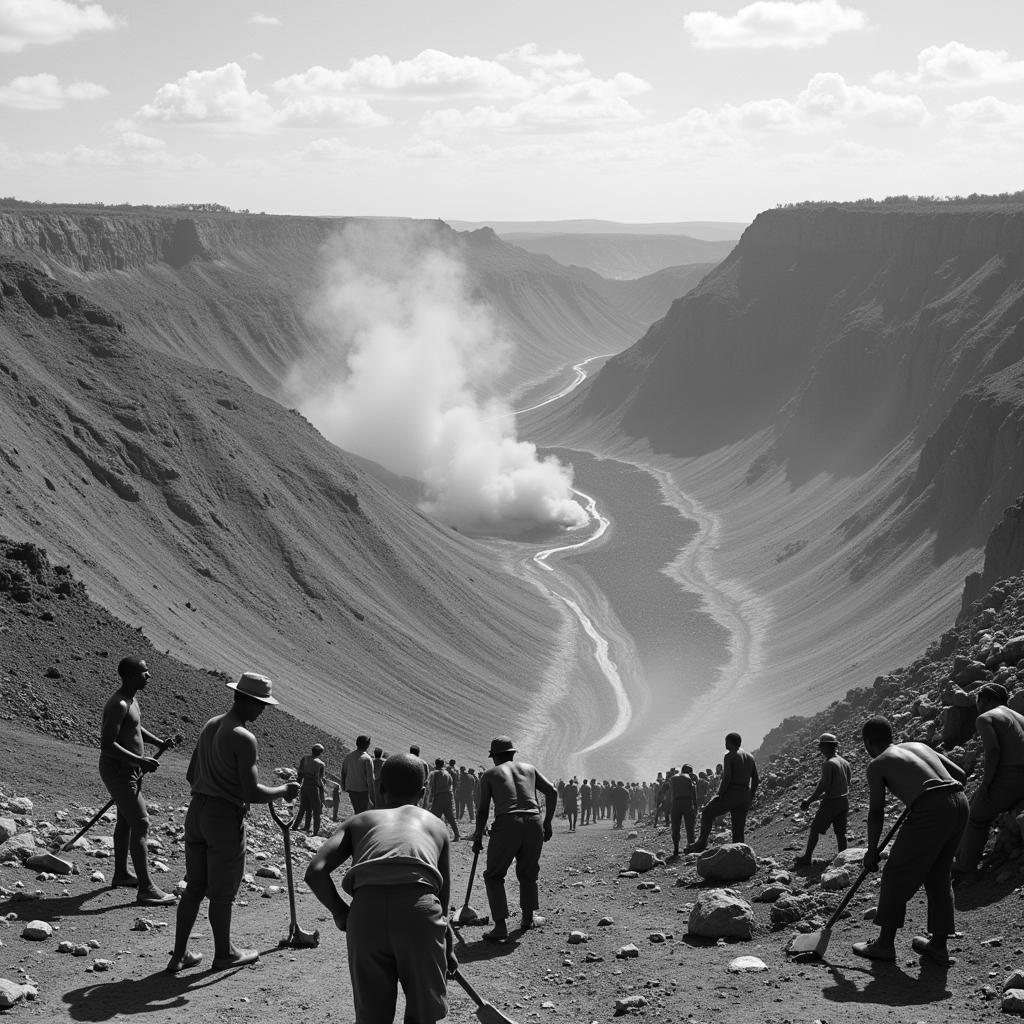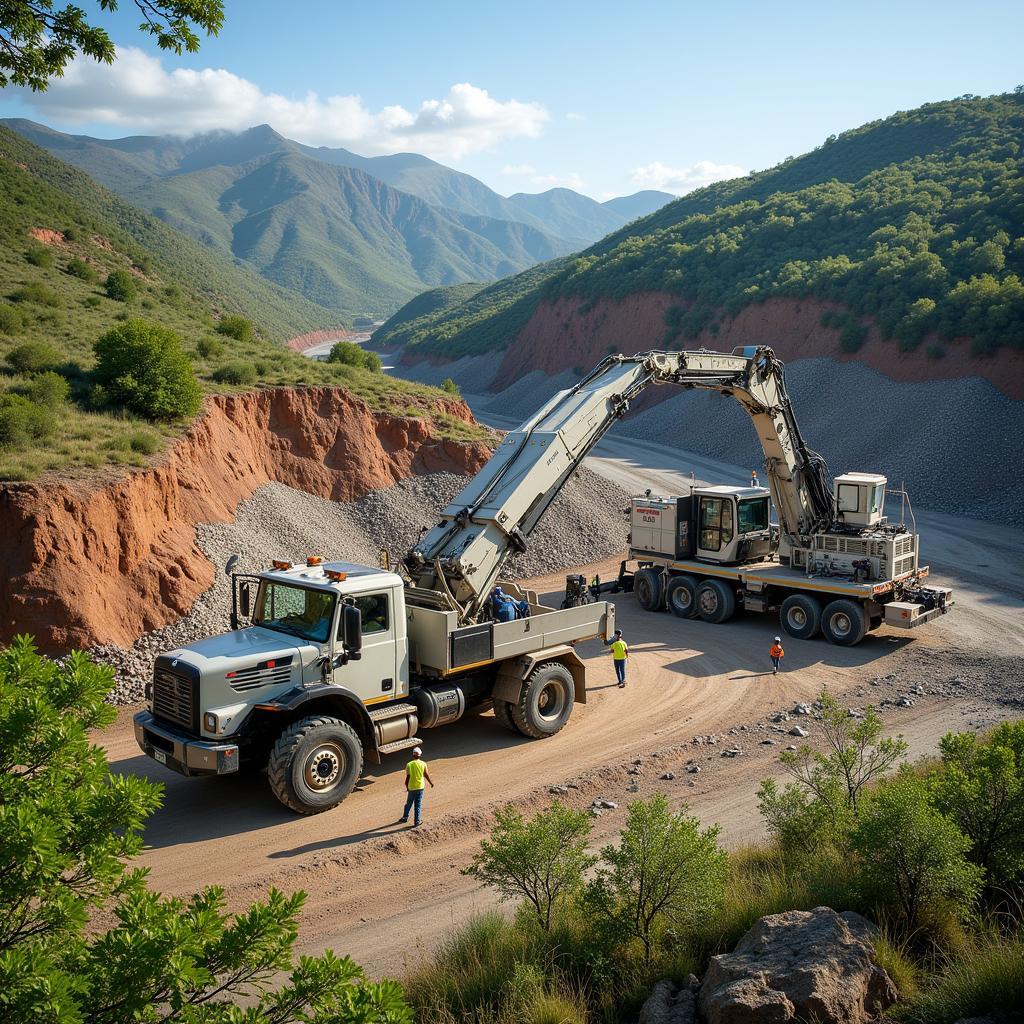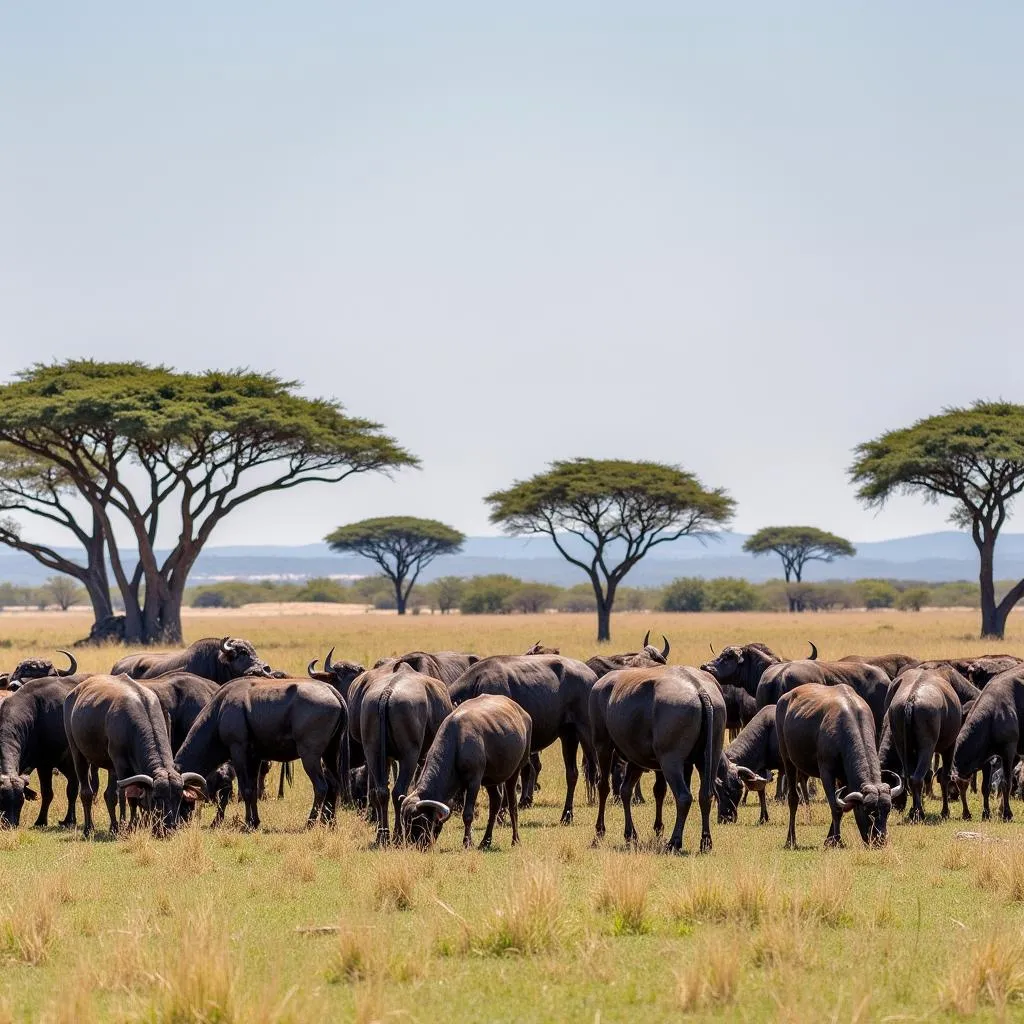South African Diamonds: A Sparkling Legacy
South African Diamonds are renowned worldwide for their exceptional brilliance and quality. The discovery of diamonds in South Africa in the late 19th century transformed the country, sparking a diamond rush and forever altering its economic and social landscape.
From Discovery to Diamond Rush
The story of South African diamonds begins in 1866, with the chance discovery of a sparkling stone on the banks of the Orange River. This unassuming pebble, later named the “Eureka Diamond,” would ignite a diamond frenzy that drew fortune seekers from across the globe. Soon after, diamonds were unearthed in increasing quantities, leading to the establishment of bustling mining towns like Kimberley, which quickly became synonymous with the world’s diamond trade.
 Early South African Diamond Mine
Early South African Diamond Mine
The Big Hole: A Monument to Diamond Fever
The feverish pace of mining in Kimberley led to the creation of the Big Hole, an immense open-pit mine that stands as a testament to the diamond rush’s impact. This colossal excavation, visible from space, represents the removal of over 22 million tons of earth in pursuit of the precious stones. Today, the Big Hole is a UNESCO World Heritage Site and a poignant reminder of the indelible mark left by diamond mining on South Africa’s landscape and history.
A Legacy of Sparkle and Controversy
South African diamonds, with their mesmerizing fire and brilliance, have long graced the crowns of royalty and adorned the world’s most exquisite jewelry. The allure of these gemstones is undeniable, yet their history is intertwined with complex issues of exploitation, colonialism, and inequality. The legacy of African Kimberley diamonds is a multifaceted one, marked by both dazzling beauty and challenging ethical considerations.
Shaping the Diamond Landscape
South Africa played a pivotal role in shaping the global diamond industry. The country’s dominance in diamond production led to the formation of De Beers Consolidated Mines in 1888, a company that would go on to control a significant portion of the world’s diamond trade. The sheer volume of South African diamond business influenced the development of diamond grading standards, marketing strategies, and the very perception of diamonds as objects of luxury and desire.
Ethical Considerations and Sustainable Practices
In recent times, there has been a growing awareness of the ethical implications surrounding the diamond industry. Consumers are increasingly concerned about the origins of their diamonds and the social and environmental impact of mining practices. South Africa has been at the forefront of promoting ethical diamond mining, with initiatives aimed at ensuring fair labor practices, environmental sustainability, and community development.
 Modern Diamond Mining in South Africa
Modern Diamond Mining in South Africa
The demand for African diamond jewelry continues to thrive, driven by the allure of these sparkling treasures. However, there is a growing movement towards conscious consumerism, with buyers seeking out diamonds that are not only beautiful but also ethically sourced and sustainably mined.
Conclusion
South African diamonds hold a captivating place in history, representing both the country’s rich mineral wealth and the complex social and economic issues that have shaped its past. As the industry evolves, South Africa continues to be a major player, striving for a more ethical and sustainable future for diamond mining. From the depths of the earth to the sparkling display cases of high-end jewelers, South African diamonds continue to fascinate and inspire, their allure forever linked to the land from which they originate.



